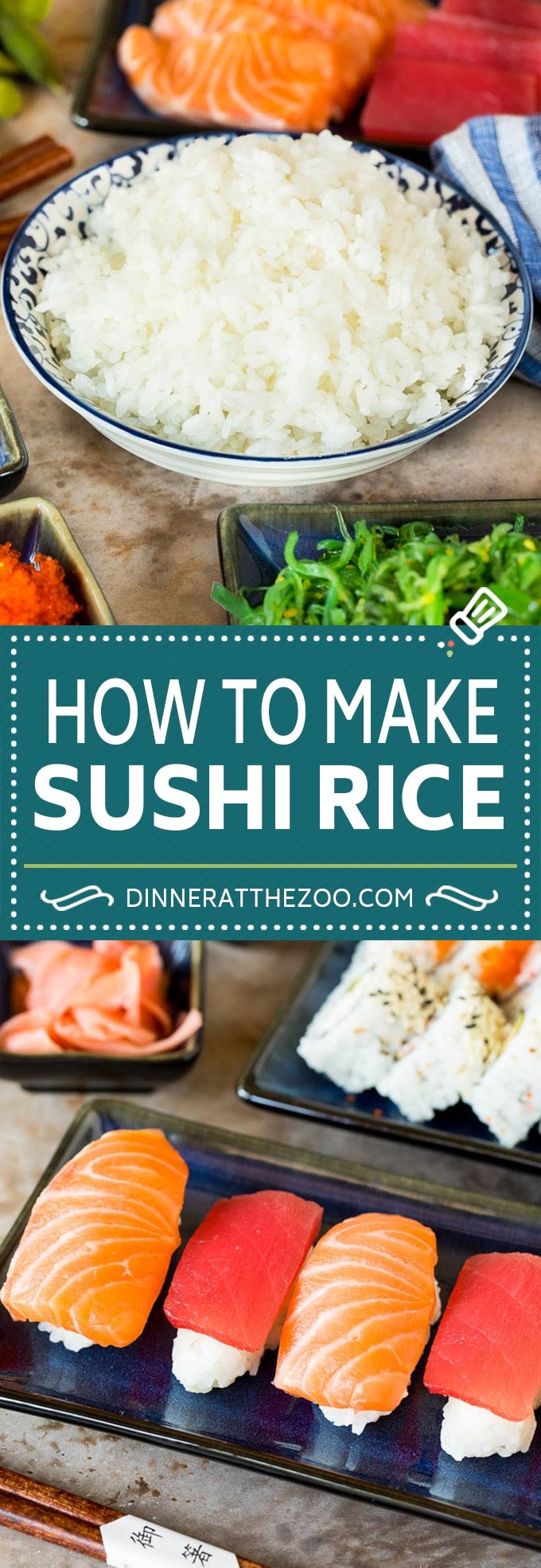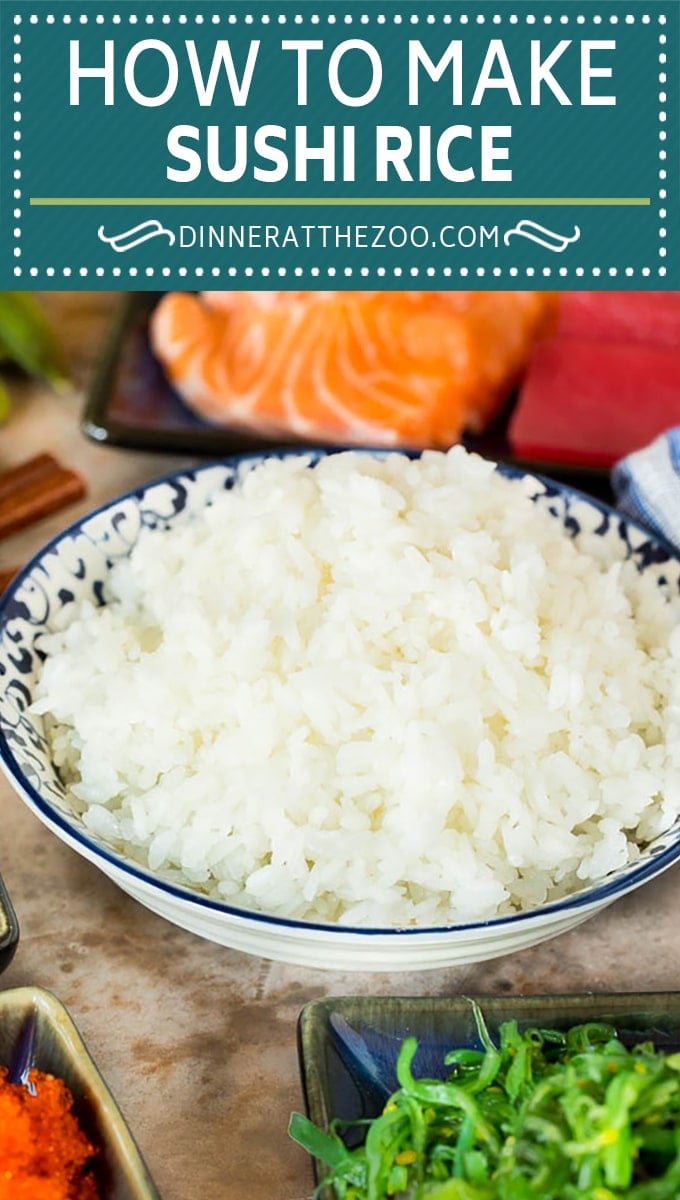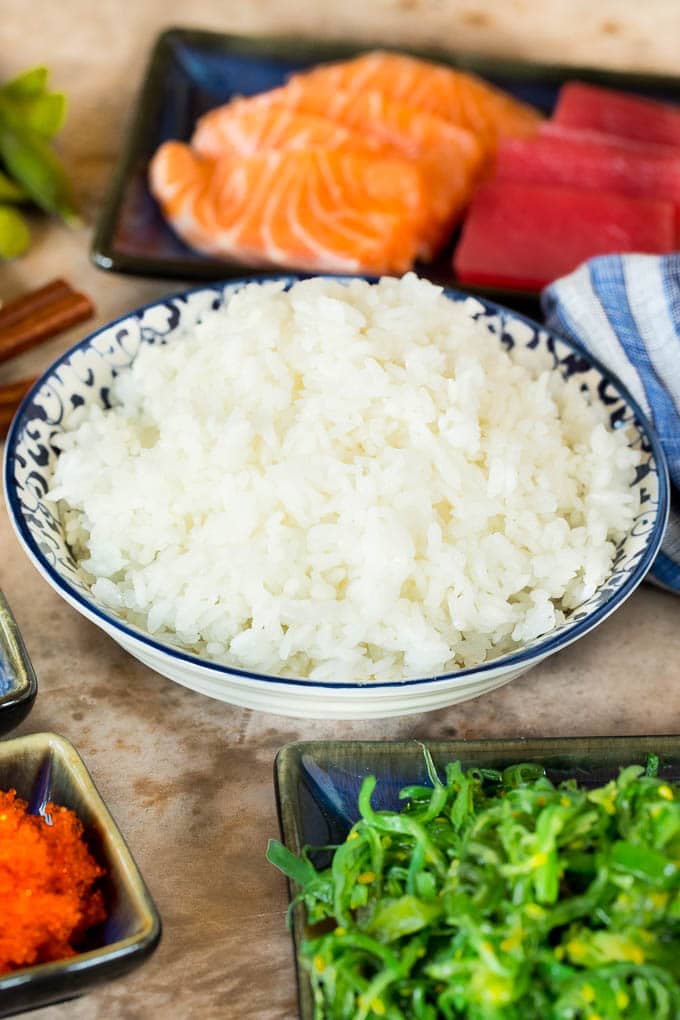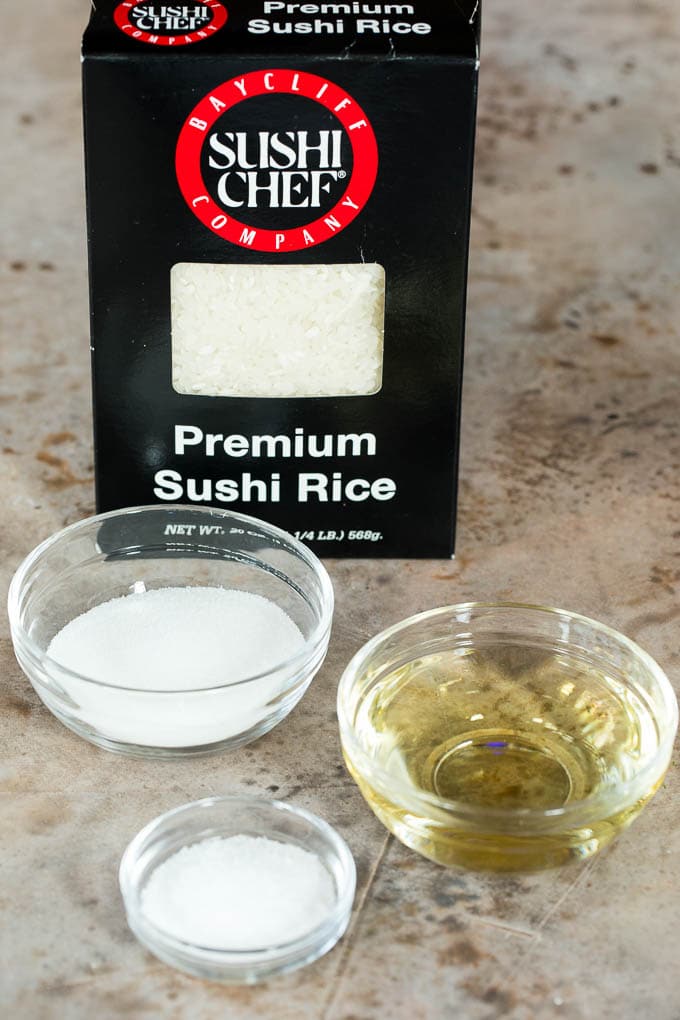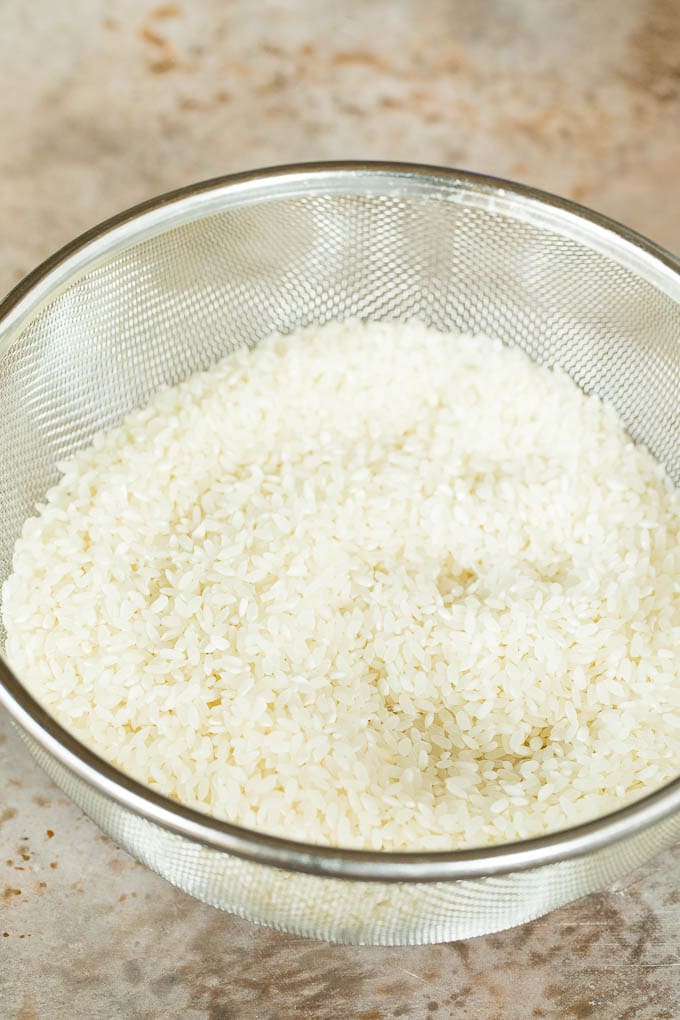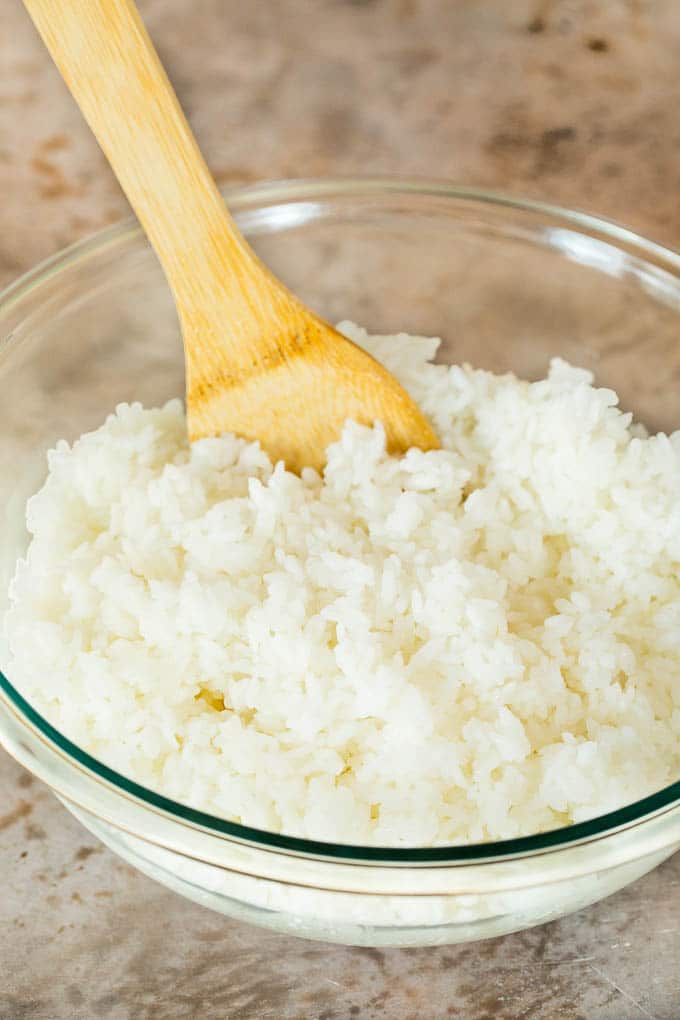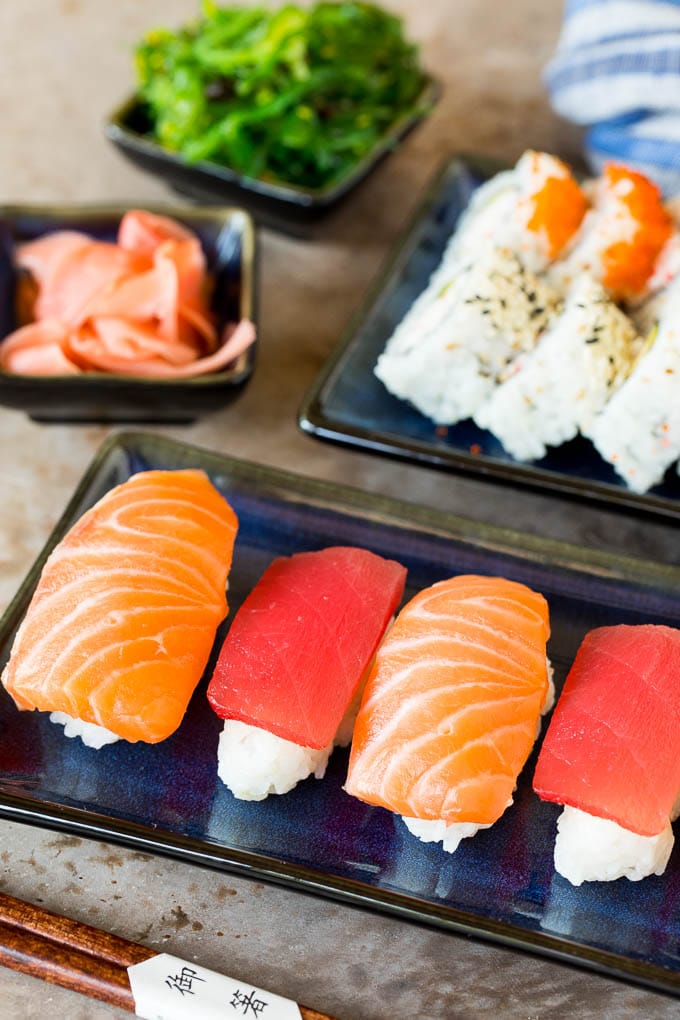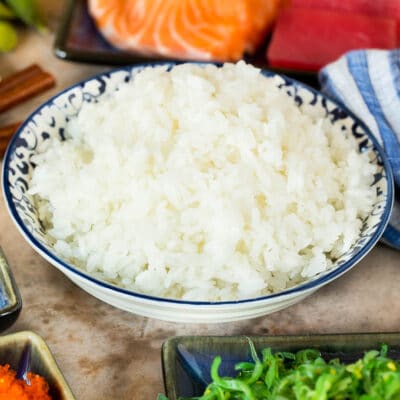The basis of sushi is sushi rice. Once you’ve mastered the rice, you can move on to create your favorite dishes such as shrimp tempura roll or a sushi bowl.
What kind of rice is sushi rice?
Sushi rice is made with short grain rice. Many grocery stores carry a variety of rice that is simply labeled as sushi rice. This is typically a Japanese short grain rice called Japonica. I have seen this type of rice in both the Asian foods section and grains section of my local grocery stores. If you don’t see the correct type of rice at your neighborhood store, try seeking out an Asian grocery store which may have more choices for rice. If you can’t find standard sushi rice, you can also try using Calrose rice, which is a short grain variety that is commonly available.
How do you make sushi rice?
Start by thoroughly rinsing your rice. This will remove excess starch and keep the rice in separate grains when it cooks, instead of clumping together. Let the rice sit at room temperature for 15 minutes to dry. Place the rice in a pot with cold water, then bring the pot to a boil. Let the rice simmer until tender, then remove it from the heat and let it stand. While the rice is cooking, heat rice vinegar with sugar and salt to make the flavoring base. Place the rice in a large bowl, then drizzle the vinegar mixture over the rice. Gently fold the liquid into the rice. After the rice has slightly cooled, you can use it to prepare your sushi.
Tips for the perfect rice
While I typically use a standard pot to cook my rice, you can also use a rice cooker appliance if you prefer. It’s important to let your rice cool slightly before you start making your sushi. You can let it sit for 10-15 minutes, or use a fan to speed up the process. Do not refrigerate the rice, as it will affect the texture. For extra flavor, add a piece of kombu (dried kelp) to the rice while it’s cooking. This is optional, but it does make it taste more authentic. Sushi rice is best used when it’s freshly made. Cold rice will be harder to roll and may not stick together. Store your cooked rice in a covered bowl at room temperature for up to 2 hours. Be sure to use a glass or wood bowl to combine your rice with the vinegar mixture. Steer clear of metal bowls, as they may react with the vinegar and give the rice an off metallic taste.
Ways to use your rice
The obvious way to use your rice is for making sushi, but I often like to make a big batch of rice to use for other purposes.
Fried Rice: Leftover rice is perfect for fried rice, such as chicken, shrimp or pineapple varieties. Sushi Bowls: Don’t feel like rolling sushi? Pile your favorite topping onto a bowl of rice such as sashimi, crab, shrimp, cucumber and avocado. Be sure to serve soy sauce, wasabi and pickled ginger on the side. Musubi: Form rice into rectangles and top with a slice of seared Spam. Wrap in a strip of nori before serving. Onigiri: Shape the rice into balls and stuff with assorted fillings such as fish, vegetables, teriyaki chicken or seaweed. Side Dish: This recipe is a great side dish for teriyaki salmon, yakitori skewers, chicken katsu or tempura.
More Asian recipes to try
Chicken Yakitori Teriyaki Beef Stir Fry Vegetable Stir Fry Asian Cucumber Salad Salmon Teriyaki
Sushi Rice Video
